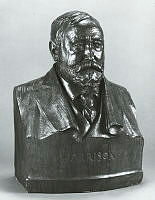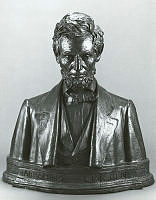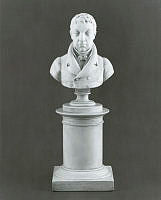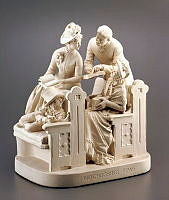Marie Joseph Paul Yves Roch Gilbert de Motier, Marquis de Lafayette, White House Collection
This plaster bust by an unknown artist is of the Marquis de Lafayette around 1930. A French aristocrat, Lafayette is renowned for his allegiance with the United States during the American Revolutionary War and his friendships with George Washington, Thomas Jefferson, and Alexander Hamilton, among others. Lafayette's 1824-1825 visits to the White House and to Washington, D.C. were among the highlights of his triumphal tour of the United States, as people honored the last surviving French general of the Revolutionary War and one of the last remaining living links to the Revolutionary Era.





